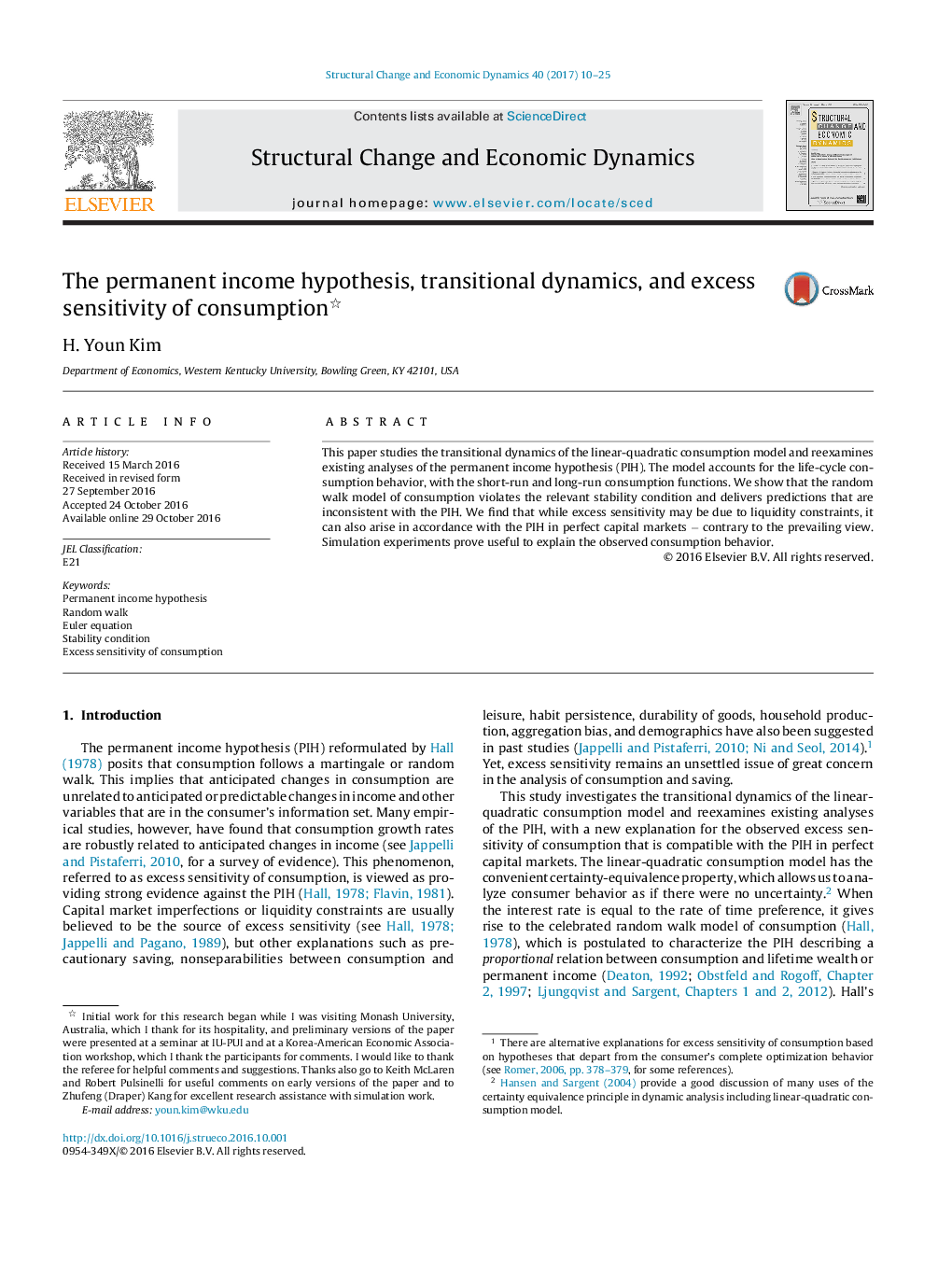| Article ID | Journal | Published Year | Pages | File Type |
|---|---|---|---|---|
| 5104518 | Structural Change and Economic Dynamics | 2017 | 16 Pages |
Abstract
This paper studies the transitional dynamics of the linear-quadratic consumption model and reexamines existing analyses of the permanent income hypothesis (PIH). The model accounts for the life-cycle consumption behavior, with the short-run and long-run consumption functions linking consumption to wealth. We show that the random walk model of consumption violates the relevant stability condition and delivers predictions that are inconsistent with the PIH. We find that while excess sensitivity may be due to liquidity constraints, it can also arise in accordance with the PIH in perfect capital markets â contrary to the prevailing view. Simulation experiments prove useful to explain the observed consumption behavior.
Related Topics
Social Sciences and Humanities
Economics, Econometrics and Finance
Economics and Econometrics
Authors
H. Youn Kim,
